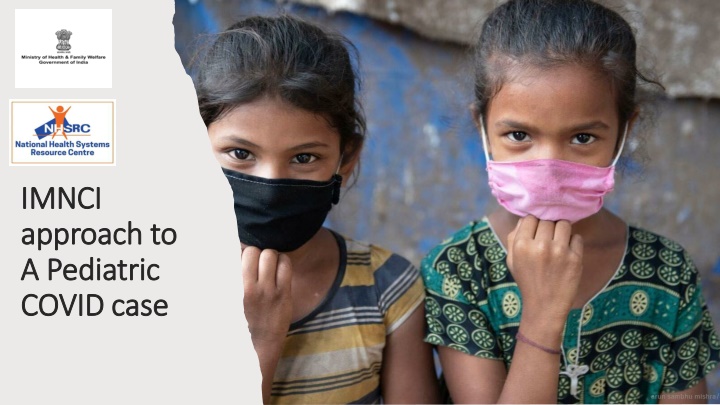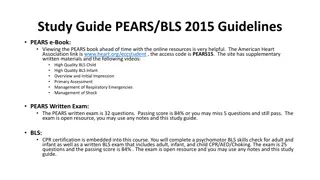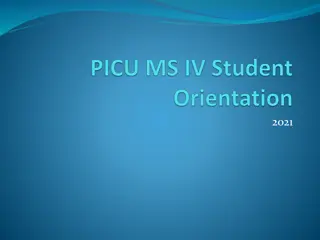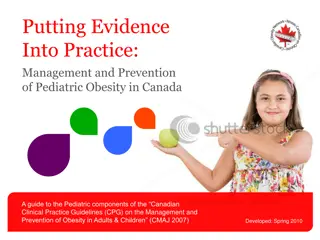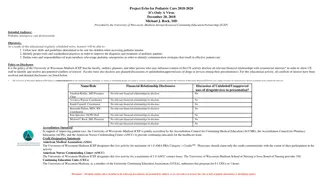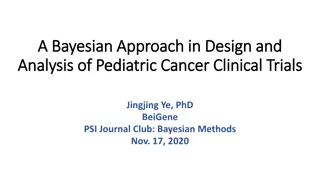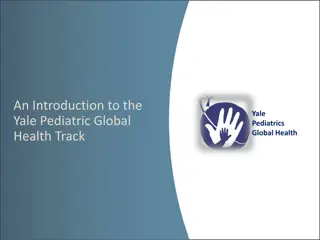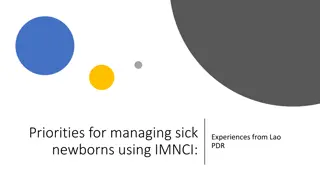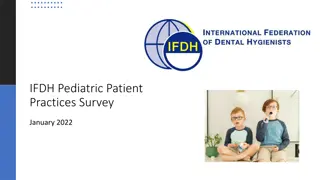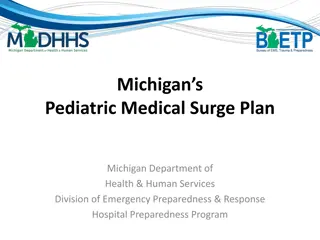Pediatric COVID Case Management Guidelines with IMNCI Approach
Understand the principles of the IMNCI approach for managing pediatric COVID cases, focusing on assessing symptoms like fast breathing, fever, lethargy, and danger signs. Learn about age-based respiratory rate thresholds, actions for moderate and severe cases, and home-based care options with teleconsultation. Follow the recommendations to provide appropriate care levels based on the severity of the child's condition.
Download Presentation

Please find below an Image/Link to download the presentation.
The content on the website is provided AS IS for your information and personal use only. It may not be sold, licensed, or shared on other websites without obtaining consent from the author.If you encounter any issues during the download, it is possible that the publisher has removed the file from their server.
You are allowed to download the files provided on this website for personal or commercial use, subject to the condition that they are used lawfully. All files are the property of their respective owners.
The content on the website is provided AS IS for your information and personal use only. It may not be sold, licensed, or shared on other websites without obtaining consent from the author.
E N D
Presentation Transcript
IMNCI IMNCI approach to approach to A Pediatric A Pediatric COVID case COVID case
Principles of IMNCI approach Principles of IMNCI approach ASK LOOK, LISTEN, FEEL DECIDE
LOOK LISTEN/ FEEL ASK Breathing rate * Grunting Fever Nasal flaring Temperature hot/ too cold Runny nose Chest indrawing Loose stools Skin pinch - dehydration Lethargic Poor feeding Sunken/ pale/red eyes Skin rash
AGE BASED RESPIRATORY RATE CUT OFFS FAST BREATHING < 2 mon. : > 60/ min * How to How to decide fast decide fast breathing breathing 2- 12 mon. : > 50/ min 12 mon - 5 yrs.: > 40/ min > 5 yrs: > 30/ min
Infant/child is lethargic/ unconscious Movements less than normal Unable to drink or Vomits Danger Danger Signs Signs Dry oral mucosa/ sunken eyes Skin pinch goes back very slowly more than 2 seconds Skin rash, stomach pain, red eyes, pallor/ extremely tired
What to do What to do? Home based care with teleconsultation and daily monitoring CHO to monitor CCC based care for those who cannot stay at home Mild Moderate DCHC level usually at CHC / DH Inform PHC MO and CHO to follow up Severe Care at the DCH level specialist care at DH PHC MO to refer and monitor daily
LEVEL OF DISEASE WHAT TO DO MILD Fever+ Stuffy nose+/- Mild cough, normal breathing, no grunting Oxygen spO2 > 95% No other danger signs Asymptomatic child Report to CC ever day through teleconsultation Reassess daily Paracetamol 10-15 mg/kg per dose 4-6 hrly Continue breast feeding MODERATE Fast breathing for age AND No chest retractions Refer to CCC using ambulance with oxygen and pediatric equipment. Ensure bed availability prior to transferring Accompany the child Fever > 5 days (axillary temp >37.5Deg. C) Temp < 35.5 deg C Develops any danger signs Any comorbidities SEVERE Inform designated CCC and transfer to nearest tertiary care ( DHC) using ambulance with oxygen and pediatric equipment Inform MO and Pediatrician Transfer on oxygen Fast breathing for age Nasal flaring, grunting sPO2 < 94 % Cold extremities Poor oral intake Lethargy / unconsciousness Seizures
Community level ASHA/ MPW Who Who follows the follows the IMNCI IMNCI approach in approach in the field the field? HWC level CHO PHC level SN
Case 1 Ganesh, 6 yrs old Mother and father COVID positive Child has fever, dry cough and is listless No other complaints Temp 99 degrees F pO2 96% What will you do? Which category do you think this child is in?
Shilpa, 4 years old Fever, cough Not drinking or eating Temp 100 Breathing rate 40/min pO2 93% What will you do? Which category do you think this child is in?
